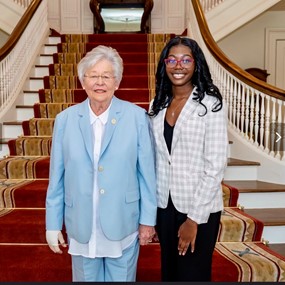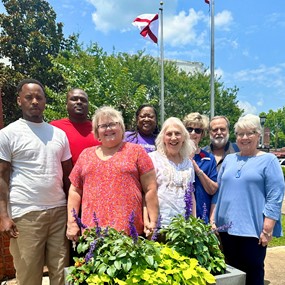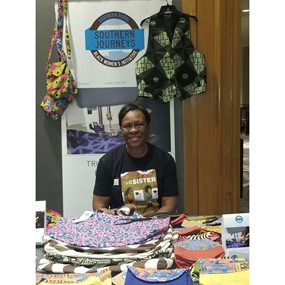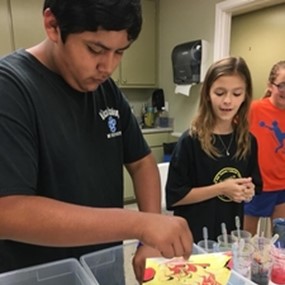Soap making stirs up student interest in science
Wilcox County’s public middle school, Camden School of Arts and Technology, CSAT, welcomed Betty Anderson, owner, and director of the Camden Shoe Shop and Quilt Museum on Tuesday, June 6, and Wednesday, June 7, to teach the incoming 8th-grade students how to make lye soap.
The class was held in the school’s library as a part of the school’s summer enrichment program.
Organized by Kristin Law, art programs and marketing director at Black Belt Treasures Cultural Arts Center, and Missy Burford, an 8th-grade science teacher at CSAT, the class allowed students to get hands-on, supervised experience with soap-making by letting them man the mixers, select and mix in their own blends of fragrances and colors, which were essential oils and food coloring supplied by Anderson and Burford.
The last step was teaching the students how to cut their hand-crafted soap into bars and package it.
During every class, Anderson educated participants on the dangers of lye while allowing them to witness the chemical reactions that make lye soap possible. She encouraged them to consider the entrepreneurial aspects of soap making and introduced students to science concepts and lessons that they’ll be exploring during science class in the upcoming school year.
“In the fall, we’ll be learning about chemical formulas and reactions, solubility and states of matter. The children who participated in the class will be able to think back to the soap-making class and make a connection between what they did during the summer and what they’re learning now,” Burford said.
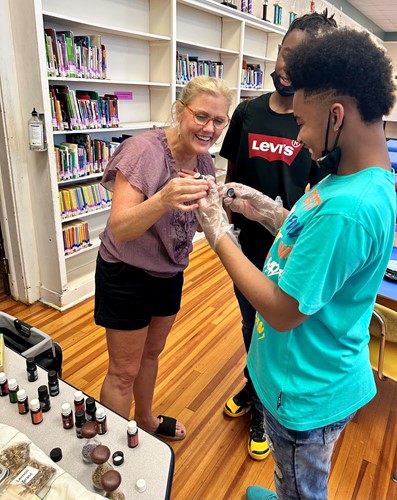
The children were also given a glimpse into the past of how soap was made before it was widely manufactured and readily available to those who needed it.
“During slavery, they [her ancestors] had to make do with what they had,” stated Anderson, describing how her family once made soap in Gee’s Bend. “They couldn’t go to the store to buy soap or the ingredients to make soap. So, they were saving grease from the hogs and using ash from wood and rainwater to make lye. They didn’t buy cans of lye. They had to make everything themselves.”
Besides these lessons, another unexpected yet heartwarming consequence of the soap-making class is that it allowed the students to demonstrate and exercise compassion toward each other.
Of the 35 students who attended CSAT’s summer enrichment program, six didn’t participate in the soap-making class. However, on the last day, because of the kindness of the students who had already taken the class, they were able to have an experience of their own.
The children who had made soap the day before shared bars of their soap with the kids who hadn’t. They also allowed the students who didn’t initially take the class an opportunity to finish the process and cut the soap. “It’s great that they are learning to work as a team,” Anderson said.
Much to everyone’s surprise, Anderson and Burford also had other older “students” eager to take part in the soap-making experience.
As faculty and staff walked by the library doors and smelled the natural aromas coming from the room, they couldn’t help but investigate what was happening, and they were immediately ushered in and given a batch of their own.
One adult participant was Kent Higginbottom, custodian and assistant coach for CSAT. Higginbottom worked alongside the students in crafting and cutting soap. While enjoying the experience, he began to realize the significance it held for the children.
“Most kids have never seen anything like this—some never will,” according to Higginbottom. “It’s different. I’m so glad that they were able to experience something different, be exposed to something other than what they’re used to. I’ve even had kids come up to me saying ‘Coach, I cannot wait to get my soap. I’m going to use the soap I made every single day.’”
From staff and students to the instructor herself, everyone agrees that the soap-making class at CSAT was a success, so much so that Burford wishes to break down the class and use elements of it, such as making their own lye and implementing the use of different bases, as science experiments to help teach her chemical reactions lesson in the fall.
“I always want to provide the children with a link between what they learn and real life. I want them to be lifelong learners. School doesn’t just end when you close the doors,” Burford said.
Anderson, who has been asked by Burford to help with the fall lessons, is particularly excited about the education and exposure the kids are receiving to soap making, which is one of her many passions. She’s more impressed, however, by the number of children who took such an interest in her class and their enthusiasm to learn.
“I am so proud of the kids at CSAT. They didn’t have to be there. They chose to be there, to learn this skill, and that makes all the difference,” Anderson added. “They came in and were attentive, great listeners, and they were eager to be a part of this. I’m proud.”
For more information on Betty Anderson’s lye soap-making class, or to book a session of your own, contact Black Belt Treasures at (334) 682-9878 or info@blackbelttreasures.com and include in the subject "Betty Anderson Lye Soap-Making Class.” She’s always open to sharing this experience with anyone willing to learn.
Tags: Camden
